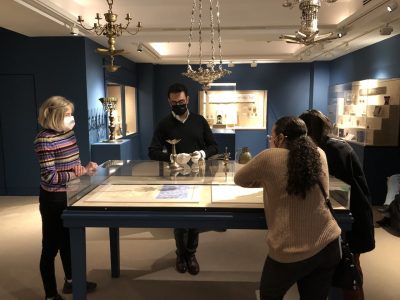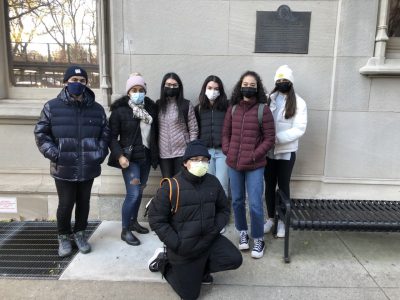by Emily Graham, ’22 (CLAS)
Taking advantage of UConn Stamford’s great location, Professor Fred Roden has coordinated field trips with his students for years — visiting art exhibits, Broadway, and more. Emily Graham recently met with Professor Roden over Zoom to talk about the trips themselves and, more importantly, what students get out of learning away from campus.
If you told a student that you visited the Cloisters for an English class, they might not believe you. To most students, such an excursion sounds like an absolute dream. But it also sounds like they haven’t taken an English class with Professor Fred Roden at UConn Stamford.

“As an undergraduate,” Roden says, “my professors took our classes on field trips. I wanted to do the same for my students, and I saw potential when I first arrived at Stamford. Our campus is ideally placed,” he explains. “We have so many places that we can go. I frequent New York City with my students most often, but I also like to explore Connecticut.”

Now in Stamford for more than twenty years, Roden’s classroom outings are basically ingrained into his curriculum. “These trips hold great experiences for students,” says Roden. “When we are out and about, students discover comparative objects and experiences from all over, thereby connecting other forms of art – visual, musical, performative – to the literary history and cultural periods that we’re studying. These parallels lead to interdisciplinary thinking.” Whether it’s a tour of the Cloisters for British Literature or a visit to multiple synagogues of varying sects for Global Jewish Literature, all of the trips are a fun mental exercise. “They’re using remnants — in our case, literary remnants — to piece together historical context,” Roden adds.

The trips serve an additional purpose, as well. “Stamford has a lot of commuters, so the student experience can feel quite limited. I want my trips to cultivate a student-life community outside of the classroom.” For that reason, Roden strategically plans them for late in the semester, as student relationships and conversations have already been established by then.
“I want for my students to connect, so I want to do all in my power to help forge those connections,” Roden justifies. “Students benefit — I benefit — from these types of interactions. We finally get to see each other’s humanity beyond a classroom’s four walls. That means a lot to me, at least.”